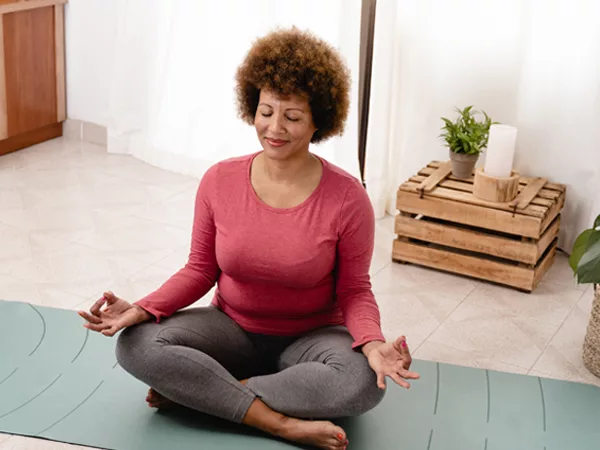Be Good to Yourself

Begin Your Wellness Journey.
Yoga and meditation elicit feelings of calm, mindfulness, and wellness. But many still hesitate to begin this ancient practice.
Here are answers to several common questions from our readers; perhaps you’ve asked these questions, yourself. Regardless, I hope the answers make you feel more confident in beginning your wellness journey.
How do I start a yoga practice?
The variety of yoga styles can be as helpful as it is overwhelming. Start with your goals. What are you trying to accomplish with yoga? You need to choose the yoga style that makes the most sense for your body.
- If you want to increase strength, try a beginner flow class. You’ll pass through poses matched to the breath, creating a moving meditation.
- To improve mobility, consider Yin classes. You’ll stretch the deeper connective tissue layers by staying in poses for a minute or more.
You can start with in-person classes, virtual classes, or pre-recorded videos to practice at home based on your goals. If you are new to movement-based practices, I recommend taking a group or private lesson with an instructor who can assist you with alignment and answer your questions. Remember, you aren’t locked-in to any style of yoga. You can explore other styles until you find one that feels the most beneficial for you, which may change depending on your current season of life.
I’m not flexible! Can I still do yoga?
Absolutely! One of the fantastic benefits of yoga can be increasing flexibility. Choose poses that are appropriate for your body and focus on the areas you want to improve.
Remember to be patient. Consistency over time is vital for any big change. If you’ve spent a lifetime teaching your body that tight hamstrings are “normal,” it’s not going to change after stretching a couple of times. Give yourself at least six weeks of consistent practice to notice gains in your flexibility and adjust your plan from there.
My mind wanders when I meditate, and then I get frustrated! What should I do?
Stay with it and let go of any expectations of what your meditation should be! Meditation is a practice of focusing your mind on something, noticing when your mind wanders off (because that’s natural), and redirecting back to the focal point. This helps cultivate awareness of where your mind goes or what type of thoughts you have when your mind is unfocused.
Over time, meditation allows you to still the mind or find calm amidst all the external stimuli. Since a healthy brain loves to create stories and connections, your thoughts will never stop. Instead, you learn to direct your mind’s focus beneficially with intentional awareness.
Stop and take some deep breaths if you’re getting frustrated during meditation. Your mind will wander, and that’s alright — it’s part of the practice. Let go of the expectation you will not have thoughts or your mind will be empty. Meditate with the intention of simply noticing everything in the present moment — your breath, relaxing your muscles — and see how it feels.
Namaste!





